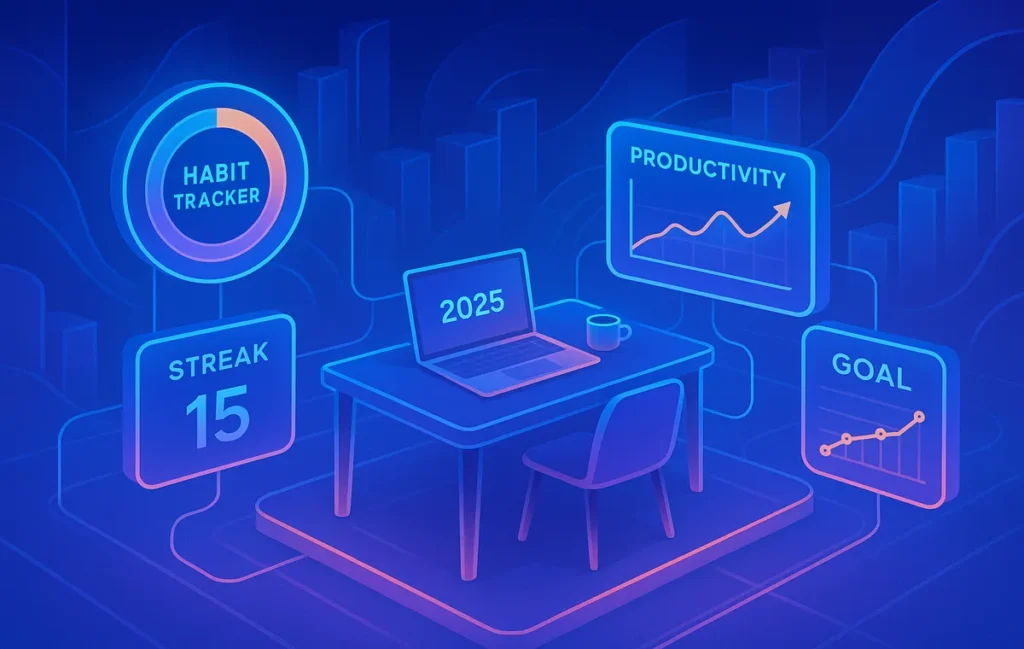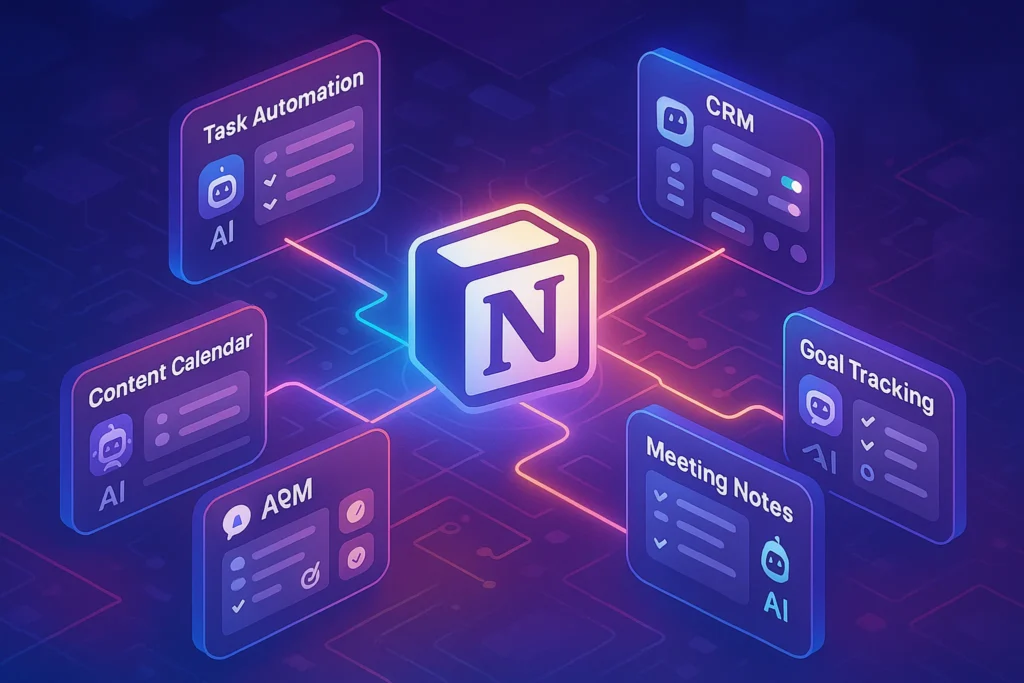🚀 Intro:
Running a solo business is equal parts freedom and responsibility. As a solopreneur, you’re your own CEO, employee, and accountability partner all in one. Unlike team-driven companies where structure comes built-in, solopreneurs rely on personal systems and habits to keep momentum alive. That’s why mastering habit building strategies isn’t optional—it’s survival.
The challenge? Solopreneurs face unique hurdles: decision fatigue, blurred work-life boundaries, and the absence of external accountability. The good news is that 2025 has brought fresh insights, backed by neuroscience, digital tools, and case studies from the growing solo business economy. This guide dives deep into building habits that not only stick but also support long-term growth without burning out.
💡 Nerd Tip: Think of your habits as “business infrastructure.” They’re invisible, but they carry the weight of your entire solopreneur journey.
🌱 Why Habit Building Matters More for Solopreneurs
When you’re working alone, your habits decide whether your business grows steadily or collapses under inconsistency. Without a team to buffer bad days, every dip in focus translates directly into stalled progress. Research from the Solopreneur Growth Lab 2025 found that 68% of solo founders who failed within 18 months cited inconsistent routines as the primary factor—not lack of skill or ideas.
Building habits for solopreneurs isn’t just about personal productivity. It’s about creating self-sustaining momentum. A strong morning routine, for example, can reduce decision fatigue, while strategic rest cycles prevent the burnout many solo founders quietly battle.
This is where intentional frameworks come in. You don’t just need habits—you need business-aligned habits designed for the solopreneur reality. When you master this, you’ll find it easier to implement strategies from posts like How to Build a Daily Routine That Actually Sticks or insights from Morning Routines Backed by Neuroscience, but tailored to your solo context.
🧩 The Solopreneur Context: Habits Beyond Generic Productivity
Traditional productivity advice often assumes you’re part of a team. Solopreneurs, however, juggle marketing, client management, finances, and execution—alone. That means habit strategies must address two layers simultaneously: personal energy management and business execution flow.
Take the case of Julia, a freelance UX designer turned solopreneur. In her first year, she worked long hours, chasing deadlines, skipping meals, and ignoring exercise. The result? Severe burnout and a dip in client satisfaction. She rebuilt her business by focusing on micro-habits: setting a strict “deep work” schedule, using habit-stacking for health (stretching after every client call), and gamifying her financial tracking. Within six months, her output doubled while her work hours decreased by 20%.
💡 Nerd Tip: Always align a habit with a visible business metric. For instance, your habit of posting daily on LinkedIn isn’t just “social activity”—it’s directly tied to inbound client leads.
🕹️ The Science of Stickiness: Why Habits Fail and How to Fix Them
Most solopreneurs know what they should do—exercise, focus, write daily, ship consistently. The problem is rarely knowledge. It’s execution. Studies from Stanford Behavioral Design Lab highlight that habits fail for three main reasons:
-
Habits are too vague. (“I’ll write more blog posts” vs. “I’ll draft 300 words every morning at 9 AM.”)
-
Habits lack emotional anchors. Without meaning, they crumble when stress rises.
-
Habits don’t have accountability loops. No feedback means no reinforcement.
In practice, solopreneurs who succeed use habit loops that include a clear trigger, a measurable action, and a reward. For example:
-
Trigger: Brew morning coffee.
-
Action: Write 250 words of content.
-
Reward: 5-minute scroll on X or reading industry news.
When linked to real goals like publishing consistent content on NerdChips, this system transforms vague “good intentions” into real progress.
💡 Nerd Tip: Build friction against bad habits. If you find yourself checking emails too often, log out after each session.
⏰ Keystone Habits for Solopreneurs in 2025
Not all habits are created equal. Some act as keystone habits—small actions that cascade into positive effects across your business and life. For solopreneurs, these are:
1. Consistent Content Creation
Whether you’re writing blogs, newsletters, or creating short-form videos, showing up consistently builds authority and trust. Connecting this to internal strategies like Habits of Highly Productive Tech Pros gives you both credibility and reach.
2. Energy-Cycled Work Blocks
Peak productivity doesn’t come from working longer—it comes from matching tasks with your natural energy rhythms. Neuroscience-backed models suggest most solopreneurs peak twice daily: late morning and late evening. Aligning deep work to those blocks dramatically improves output.
3. Intentional Rest and Recovery
It’s easy to dismiss rest as laziness when you’re hustling solo, but Why Rest is Your Productivity Superpower explains why recovery is actually a business growth strategy. Sleep, movement, and mindful breaks should be engineered into your daily flow.
4. Financial Tracking Rituals
Treating your cash flow like a daily habit—not a monthly panic—keeps stress low and decisions sharp. Even a two-minute daily finance check-in strengthens your business confidence.
⚡ Ready to Build Smarter Workflows?
Explore AI workflow builders like HARPA AI, Zapier AI, and n8n plugins. Start automating in minutes—no coding, just creativity.
🧠 Behavioral Hacks for Staying Consistent
Consistency is the holy grail for solopreneurs. A 2025 survey by Indie Founder Network revealed that solopreneurs who applied gamification elements (like streak counters, milestone rewards, or public accountability) stuck to habits 34% longer than those relying on willpower alone.
For example, tools that gamify task completion can transform mundane activities into dopamine hits. Even a simple visual progress tracker can keep motivation high. Pairing this with tactics from Using Gamification to Hit Your Goals gives solopreneurs a psychological edge.
💡 Nerd Tip: Don’t underestimate community. Even if you work solo, publicizing your progress on X or sharing weekly milestones in a mastermind group multiplies accountability.
📊 Practical Framework: The Solopreneur Habit Compass
Think of your habits in four quadrants:
-
Focus Habits: Deep work, content creation, strategic thinking.
-
Health Habits: Sleep, movement, diet.
-
Money Habits: Daily financial check-ins, weekly reviews.
-
Growth Habits: Learning, networking, experimentation.
Balancing these ensures your solo business doesn’t scale at the cost of your health or relationships. The goal isn’t perfection—it’s sustainable alignment.
👤 Real Solopreneur Case Studies
It’s one thing to read frameworks, but quite another to see them in action. Here are a few solopreneurs who turned habit design into business growth:
1. The Freelance Designer Who Beat Burnout
Amir, a UX designer, used to spend 12-hour days in front of his laptop with zero structure. His productivity was unpredictable, and he constantly felt drained. By introducing a micro-habit system—stretching after every client call, scheduling 90-minute design sprints followed by 10-minute walks, and limiting deep work to his natural morning peak—he reduced fatigue dramatically. Within four months, he reported 25% faster project delivery times and increased client referrals.
2. The Creator Who Scaled Through Consistency
Lena, a content creator, always struggled with publishing regularly. She began treating content creation like brushing her teeth: a non-negotiable habit. Every morning after coffee, she drafted 500 words before opening social media. Over a year, she published 280+ posts, many of which were repurposed into videos and newsletters. Her inbound affiliate revenue doubled, and her audience trust skyrocketed.
3. The Consultant Who Gamified Growth
Marco, a solo business consultant, hated doing finance reviews. He started turning his weekly money check-in into a “scoreboard game,” tracking wins like invoices sent, leads followed up, and expenses cut. This gamified ritual not only made finances fun but also revealed gaps that helped him increase his net profit margin by 18% in six months.
💡 Nerd Tip: Case studies prove that habits aren’t abstract theories—they’re business levers. Anchor your own routine to metrics like client referrals, revenue stability, or content output.
📈 Data-Backed Insights for 2025
Habits are no longer just personal hacks—they’re measurable business differentiators. New research across the Freelance Economy Report 2025 and Behavioral Business Studies Journal shows:
-
74% of solopreneurs who survived beyond three years had at least one documented daily routine. Those without structured habits dropped out of business nearly twice as fast.
-
41% of solopreneurs practicing daily “financial hygiene” (micro check-ins with cash flow) avoided liquidity crises that often cripple solo businesses.
-
Solopreneurs who tracked habits publicly (social accountability or mastermind groups) were 33% more likely to sustain growth milestones, compared to those who kept routines private.
These stats confirm that habit-building isn’t just about “feeling productive”—it’s directly correlated with business resilience and survival.
⚖️ Solopreneur vs Team-Based Habits
Most productivity advice is written for teams, but the solopreneur journey is radically different. Here’s how habits diverge:
| Team-Based Workflows | Solopreneur Habits |
|---|---|
| Daily stand-up meetings create accountability. | Solo founders must create a self-standup ritual, reviewing priorities each morning. |
| Managers provide feedback loops on progress. | Solopreneurs must design external accountability through tools, communities, or public commitments. |
| Teams share workload, reducing the pressure of inconsistency. | Solopreneurs rely entirely on their personal consistency—if you don’t show up, nothing moves. |
| Company policies enforce rest and working hours. | Solopreneurs must self-enforce rest cycles to avoid burnout. |
💡 Nerd Tip: Don’t copy-paste team productivity systems. Customize your own solo framework, or risk burning out trying to work like a company without the resources.
🤖 Future-Proofing Habits with AI Tools
2025 has redefined how solopreneurs build and sustain habits. AI-powered habit tools are no longer gimmicks—they’re adaptive partners.
-
Motion AI automatically arranges tasks into your calendar, adapting to your energy patterns. If you skip a focus block, it reshuffles intelligently.
-
Rize AI tracks focus sessions in real time and sends personalized nudges when distraction levels spike.
-
Habitica 2.0 gamifies daily habits by turning them into RPG-style quests. For solopreneurs who thrive on small wins, this playful system makes consistency addictive.
-
Wearable nudges: Smart glasses and wristbands now integrate biofeedback. For example, when stress signals rise, your device can suggest a 5-minute breathing habit to reset your state.
💡 Nerd Tip: AI isn’t just about efficiency—it’s about habit scaffolding. Use these tools not as crutches but as partners that adapt to your personal rhythms.
🧠 Why All This Matters
By combining real-world case studies, data-backed insights, tailored solopreneur comparisons, and AI-driven habit tools, you can design a system that’s resilient, adaptive, and aligned with your business goals. Solopreneurs aren’t supposed to mimic corporate habits. You’re supposed to design leaner, smarter, more flexible systems that let you scale without burning out.
And that’s the essence of solopreneurship in 2025: freedom with structure.
📬 Want More Smart AI Tips Like This?
Join our free newsletter and get weekly insights on AI tools, no-code apps, and future tech—delivered straight to your inbox. No fluff. Just high-quality content for creators, founders, and future builders.
🔐 100% privacy. No noise. Just value-packed content tips from NerdChips.
🧠 Nerd Verdict
Habit building for solopreneurs in 2025 is less about generic routines and more about business-integrated self-management. When habits are designed with the solo founder’s context in mind—linking daily actions to visible business outcomes—they stick, they scale, and they protect against burnout. NerdChips stands by this: treat your habits as the invisible scaffolding of your business empire. Without them, even the smartest strategies collapse. With them, every idea has a chance to grow.
❓ FAQ: Nerds Ask, We Answer
💬 Would You Bite?
Which solopreneur habit do you struggle with most—focus, health, money, or growth—and what’s your plan to fix it this year?
Share your thoughts below. 👇
Crafted by NerdChips for creators and teams who want their best ideas to travel the world.



